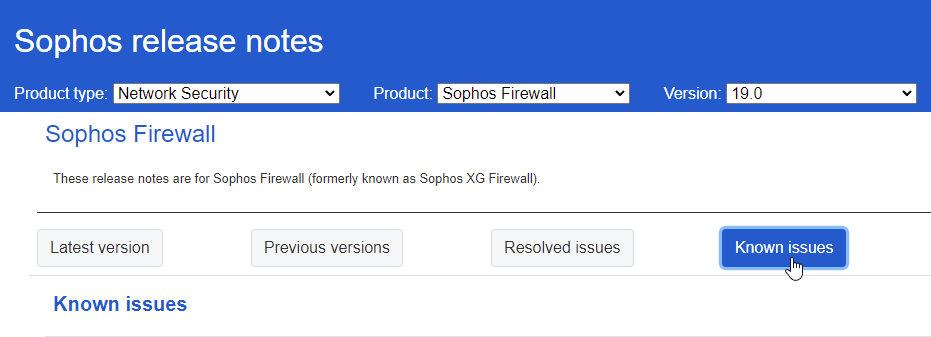https://community.sophos.com/sophos-xg-firewall/b/blog/posts/sophos-firewall-os-v19-is-now-available
Release Notes: docs.sophos.com/.../index.html
"Old" V18.5 MR3 Thread: https://community.sophos.com/sophos-xg-firewall/b/blog/posts/sophos-firewall-v18-5-mr3-is-now-available
The V19.0 EAP Community: https://community.sophos.com/sophos-xg-firewall/sfos-v19-early-access-program/
About the Upgrade Issues:
See Known Issue List in Release Note
s: 
This thread was automatically locked due to age.

